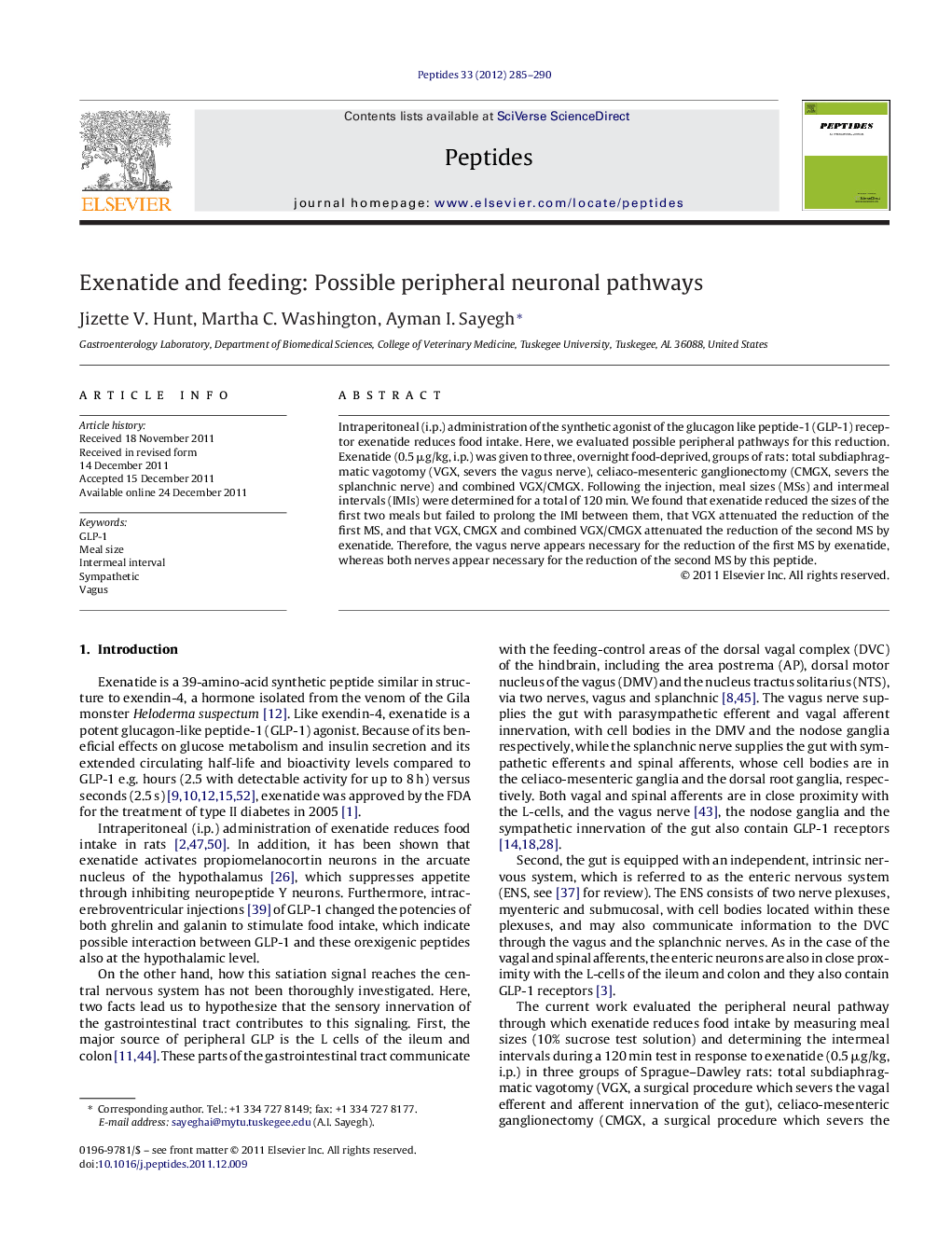| کد مقاله | کد نشریه | سال انتشار | مقاله انگلیسی | نسخه تمام متن |
|---|---|---|---|---|
| 2006323 | 1066329 | 2012 | 6 صفحه PDF | دانلود رایگان |

Intraperitoneal (i.p.) administration of the synthetic agonist of the glucagon like peptide-1 (GLP-1) receptor exenatide reduces food intake. Here, we evaluated possible peripheral pathways for this reduction. Exenatide (0.5 μg/kg, i.p.) was given to three, overnight food-deprived, groups of rats: total subdiaphragmatic vagotomy (VGX, severs the vagus nerve), celiaco-mesenteric ganglionectomy (CMGX, severs the splanchnic nerve) and combined VGX/CMGX. Following the injection, meal sizes (MSs) and intermeal intervals (IMIs) were determined for a total of 120 min. We found that exenatide reduced the sizes of the first two meals but failed to prolong the IMI between them, that VGX attenuated the reduction of the first MS, and that VGX, CMGX and combined VGX/CMGX attenuated the reduction of the second MS by exenatide. Therefore, the vagus nerve appears necessary for the reduction of the first MS by exenatide, whereas both nerves appear necessary for the reduction of the second MS by this peptide.
► Exenatide reduces food intake.
► We evaluated three possible neuronal pathways for this reduction.
► Exenatide (0.5 μg/kg, i.p.) was given to VGX, CMGX, VGX/CMGX animals.
► VGX attenuated the first meal and all surgeries attenuated the second meal.
► Vagus nerve and splanchnic nerves are necessary for exenatide satiation effect.
Journal: Peptides - Volume 33, Issue 2, February 2012, Pages 285–290